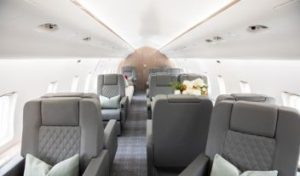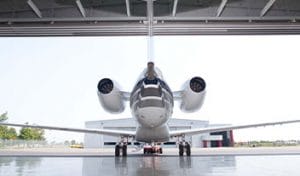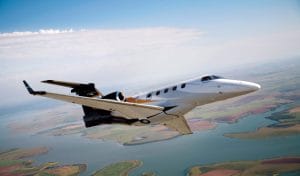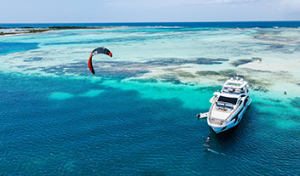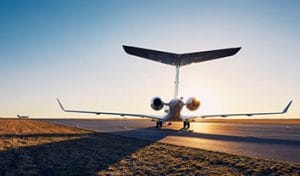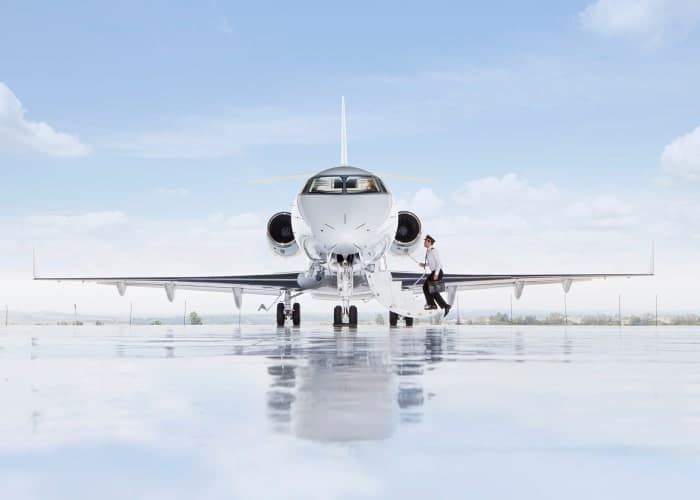‘Tis the season when winter travel commences for businesses, and so do ski vacations! And unfortunately, for some of us, ’tis also the season for icy airplanes and air traffic delays!
Winter weather brings special challenges for the aviation industry and its travelers. In addition to the hazards of snow-covered runways and in freezing temperatures, our pilots and operations staff work to manage air traffic control delays and de-icing procedures. It can be frustrating for business travelers to experience delays associated with winter operations, so we want to give you the inside scoop on why those delays occur.
-
Winter Travel Challenges: Snow and Ice
One might think flying through the snow seems daunting, but it’s really the snow-covered runways and taxiways that are more challenging for flight operations. Landing on a runway that’s snow- or ice-covered is a hazard pilots take seriously during the winter months. And at small airports with limited snow-removal equipment and personnel, it can take time to plow runways and taxiways, resulting in delays for aircraft in the air and on the ground.
-
Winter Travel Challenges: Freezing Temperatures and De-Icing Procedures
Freezing temperatures can mean an iced-up airplane, and the FAA has very strict rules about not taking off with visible frost or ice on an airplane. Taking off with even a small amount of frost on an airplane can reduce lift as much as 40 percent – so deicing is not only mandatory, but it’s always the right thing to do. De-icing can cause delays, as it does take time to de-ice before a flight.
Magellan wants to help reduce any additional costs and improve your comfort by putting aircraft in a hangar whenever possible. There are also rules about taking off into icing conditions. Since most business aircraft have anti-ice and de-ice systems onboard, light icing in flight is not usually a problem. But if the forecast calls for moderate or severe icing, or the pilot of another aircraft reports severe icing, delays or reroutes may occur in order to keep the airplane safely in the air.
-
Winter Travel Challenges: Low Visibility
Winter also means reduced visibility, especially in early morning when fog can be prevalent. Also, snowstorms can reduce visibility greatly for aircraft taking off or landing.
But why can some airplanes land in bad weather while others can’t? As a passenger, it can be frustrating to see a private jet fly into an FBO while your pilot reports you’ll have to divert to an alternate airport for weather. The FAA publishes minimums for each approach into an airport. Those minimums include visibility requirements and cloud height requirements, along with other limitations like airspeeds to follow and aircraft equipment requirements. In addition, each aircraft operator publishes their own, often more stringent requirements, for completing approaches at airports, especially if the airport is known to be a difficult one.
This explains why some aircraft are able to land at a particular airport while others can’t. Aircraft with specific equipment on board may have different visibility requirements for an approach. No pilot wants to hold in the air for weather to get better, or to divert. But, the minimums are there for a reason. That’s so that the pilots will be assured that they will see the runway in time to land safely.
-
Winter Travel Challenges: Air Traffic Control Delays
Air traffic control delays happen for a variety of reasons. For instance, airports have “rush hours” just like you see on the highways. These are particular times that require ATC to give airplanes a “flow time” or a scheduled arrival time. Poor weather slows this down even more, of course.
In the winter, the FAA may implement flow times and other delay programs. This is because of reduced visibility, hazardous weather conditions, de-icing procedures, or snow removal operations, to name a few. In addition, local airport procedures often dictate delays. For example, some airports are particularly challenging during the hight of the winter. An airport might have three runways, but only one runway that is designated for low-visibility operations. Low-visibility operations require certain lighting systems and weather reporting systems to be operational. Delays can occur is a piece of runway or taxiway equipment is inoperative, as well.
-
Winter Travel Challenges: Ramp and Vehicle Safety
Finally, it is just as important to us that we keep our airport staff and operations employees safe as it is that we keep our clients safe. Therefore, closed roads or winter weather may prevent an airport or operator from having a full staff during winter storms. Airport personnel work hard to ensure the airplanes are de-iced and the ramp areas are safe for everyone. Sometimes the weather just prevents operations from happening at full speed.
-
Winter Travel Challenges: Planning Ahead
At Magellan Jets, we work hard all year to ensure your safety. We know that winter travel months can be especially challenging with weather and ATC delays. We continuously work to mitigate delays by putting aircraft in hangars whenever possible and pre-positioning aircraft outside of snow events – so your aircraft arrives to pick you up warm and on-time.
Contact Magellan Jets today to find out how our 24/7 Flight Support team can assist you with your winter travel plans at 877-550-5387 or click here to get a quote for your upcoming trip.

